#crocus sativus
Explore tagged Tumblr posts
Text

Crocus sativus. Autumn crocus Saffron. In the October issue of WoI .. @tessatraeger ..
17 notes
·
View notes
Text

I brought my saffron corm crop with me to the East Coast, and will be attempting to grow them in planters for the next year until I can get them back in the ground. I have 212 corms in four 12”-deep planters on the balcony of a 110-year-old house in Ithaca, New York, USA. Facing south!
I got these guys out of the wood shavings I packed them in for shipping, and into first the first weekend of September, and now, here we go!
5 notes
·
View notes
Text
Our 2024 garden: order in
Yes, you read that right! This is about our 2024 garden! I get regular emails from Veseys, promoting their products, and got a very interesting one today. On following the link, I knew I had to place an order! They had Canadian saffron crocuses available! From the description: “Exclusively Canadian, these bulbs are produced in Quebec. “ Okay, to technically they are a zone 4 bulb, but so is…
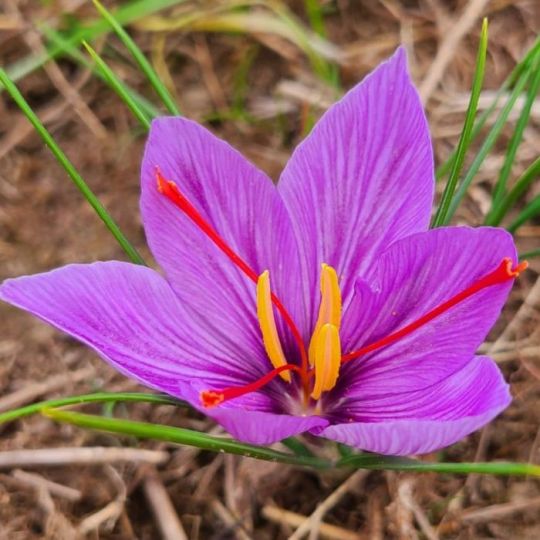
View On WordPress
5 notes
·
View notes
Text


Opened this morning
5 notes
·
View notes
Text
Saffron


rarity, complication, vivacity, living life to the fullest, caution against excess and burnout
5 notes
·
View notes
Text
list of "beautiful" words found in a virtual space
I went through my following/followers lists and collected "beautiful" words and phrases from usernames and blog titles to try to include in your next poem/story
Amour Propre - self-esteem
Ephemeral - lasting a very short time
Espiègle - tending to or exhibiting reckless playfulness
Forgotten faith - faith that has ceased to be remembered
Jovial - characterized by good-humored cheerfulness and conviviality
Moonstruck sun - a sun affected by the moon
Poetic scars - scars that have qualities of poetry
Psychosomatic - of, relating to, concerned with, or involving both mind and body
Nyctophilia - the condition of being very happy and comfortable in the dark
Orphic - of or relating to Orpheus; mystic, oracular
Pirouette - a rapid whirling about of the body
Reverie - daydream; the condition of being lost in thought
Saffron - the deep orange aromatic pungent dried stigmas of a purple-flowered crocus (Crocus sativus) used to color and flavor foods and formerly as a dyestuff and in medicine; a moderate orange to orange yellow
Strawberry Blonde - a reddish-blond color
Sunflowers & teeth - any of a genus (Helianthus) of New World composite plants with large yellow-rayed flower heads bearing edible seeds that yield an edible oil & hard bony appendages that are borne on the jaws or in many of the lower vertebrates on other bones in the walls of the mouth or pharynx and serve especially for the prehension and mastication of food and as weapons of offense and defense
Thaumaturge - a performer of miracles
The last poet - the last maker of verses
Windows of the soul - windows of a person's total self
Wrath - strong vengeful anger or indignation
Zephyr - a breeze from the west; a gentle breeze
If any of these words or phrases make their way into your next poem/story, please tag me, or leave a link in the replies. I would love to read them!
More: Word Lists
#writing prompt#word list#spilled ink#dark academia#writeblr#literature#writers on tumblr#poetry#poets on tumblr#creative writing#light academia#fiction#studyblr#langblr#words#linguistics#writing reference#writing ideas#writing inspo#writing tips#writing inspiration#writing resources#definitions from merriam-webster and oxford + phrase definitions i frankensteined together
436 notes
·
View notes
Text
Hmm:

Regarding tenzu tablets:
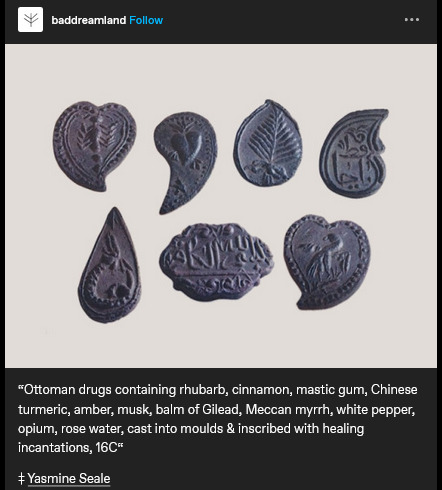
Caption reads: "Ottoman drugs containing rhubarb, cinnamon, mastic gum, Chinese tumeric, amber, musk, balm of Gilead, Meccan myrrh, white pepper, opium, rose water, cast into moulds & inscribed with healing incantations, 16C". Credited with a link to Yasmine Seale, on social media.
Original linked source doesn't mention where these particular tablets/molds were created, kept, displayed, etc. But I wanted to learn more and found a kinda recent summary of tenzu which was published by Nil Sarı (head of History of Medicine and Ethics Department at Istanbul University's Cerrahpasha medical school, president of Health History and Museology Association), which was presented at a conference in 2016:
Nil Sarı. "The Special Pharmaceutical Tablet “Tenzu” in Ottoman Medicine.” 7th International Congress for History of Islamic Medicine, October 24-28, Fez, Morocco, 2016: 24-28.
An excerpt of the text:
In Ottoman Turkish tenzu (tensuh) means "very rare beautiful thing" or "a box containing a variety of fragrances." Tenzu was also said to be the name of a place in Hitay (Eastern Turkistan / Xinjiang) where a medicinal clay - the main ingredient of the tablet tenzu - was imported from. Tenzu was a kind of theriac said to be effective against various ailments. Different tenzu prescriptions are noted in the texts [...] of several medical manuscripts of the 17th and 18th centuries. These tenzu prescriptions were described by various physicians, e.g. the head physicians Salih bin Nasrullah and Nuh Efendi as well as Hayatizade Mustafa Feyzi and Shaban Shifai who were palace physicians of the period. The special pharmaceutical tablet/pastille named "tenzu kursu" was formed in various shapes, i.e. oval, round, or rectangular. A measured amount of the drug preparation was compressed and shaped in a special brass mold named "tenzu kalibi" in Turkish. [...]
Prayers and ornamentations are engraved on the metal molds [...]. The expressions Deva al kulub (Drug for the heart) and Shifa al marghoob (The desired, yearned healing) inscribed on molds reinforce spirituality. [...] Inscriptions around the center of the other flower shaped pattern are Ferd, Hayy, Kayyum and feehi shifaun lin-naas (wherein is healing for mankind, Surah an-Nahl, verse 69). [...] Al-Hayy and Al-Qayyum are often used together. Al-Hayy signifies "ever-lasting life", and Al-Qayyum "self-existing life". [...] Sihhat bad (Have a good health) and Afiyet bad (Have a good appetite) are inscribed. [...] A. Suheyl Unver and Hayri Sozen published several tenzu prescriptions in their book "Turk Farmakaloji Tarihi I.", in 1960. [...] Tenzu prescriptions are found in several medical manuscripts kept in the Topkapi Palace Library, Suleymaniye Library and Istanbul University Rare Books Library.
Clay is a main ingredient [...]. Tiyn-i Tenzu is an unknown red colored clay. However, Terra Sigillata (Tiyn-i mahtum / muhurlu toprak) and Armenian Clay (Kil ermeni) are found in the prescriptions. [...] There are also animal products in the compositions, i.e. ambergris (amber), bezoar (badzehr), kermes (kirmiz), musk (misk), raw silk (harir-i ham / ham ipek), [...] and burnt deer antler (yanmisgeyik boynuzu). There are a wide variety of herbal drugs in the compositions, i.e. Acorus calamus [...], Aloe vera (Sabir), [...] Anchusa offinalis (Lisan-i sevr cicegi), Artemisia absinthium [...], Bambusa arundinaceae [...], Chenopodium album [...], Cinnamon (Darcin), Citrus aurantium [...], Crocus sativus (Za'feran), Embellia ribes [...], Gummi mastix [...], Heliotropium arborsecens [...], Nardustachys jatamansi [...], Potentilla reptans [...], Pterocarpus santalinus [...], Red rose/Rosa gallica [...], Rheum officinale (Ravend), Rumez acetosellaseed [...], Ruta graveolens (Keci Sadefi/Sedef Otu), Terminalia citrina [...], Terminalia chebula [...], Tormentilla (Tormentila).
Shaping and storage of these drugs are explained alongside some of the tenzu prescriptions. According to a recipe, all ingredients are beaten very thin on a porphyry (onyx marble) [...]. Each dose wrapped in gold foil is anointed an amount of almond oil. It is pressed into the mold, dried in the shade and stored in wood boxes. [...] Drugs in tablet form was an old tradition. In general, the preparation is poured onto a tray. [...] After dried in the shade, orange leaves are put between them. Stored in colored glass containers, they're reused when needed, squashed with water and drunk as a syrup. Also, flat pills made of a drachma weight were retained on the tongue in the mouth [...]. Although drugs in tablet form were used throughout Ottoman history either as a pastille or to be converted into syrup, the tenzu tablet molds were designed for the Ottoman sultans and members of the dynasty to make special tablets decorated with calligraphy [...].
[End of excerpt.]
All of these images are cropped screenshots of the PDF scan of the printed "conference works"; the PDF was uploaded online by Nil Sarı.


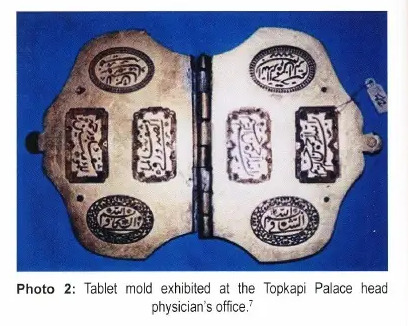

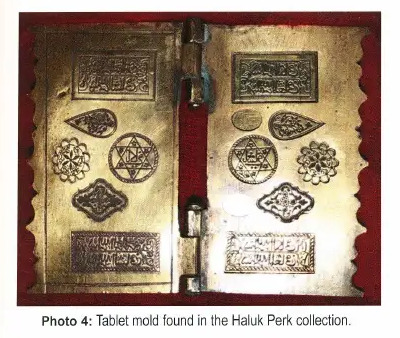
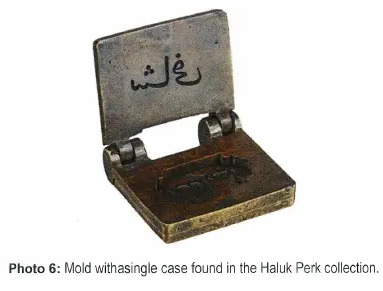
#sorry some of the non english is messed up because i had to transcribe the text myself from the image scans#also like that the Special Sweets Kitchen of the palace produced medicine
139 notes
·
View notes
Text
The Early Bloom and Symbolism of Crocus
Crocus flowers, among the first to bloom in late winter and early spring, are a delightful sign that warmer days are on the horizon. These small, vibrant flowers are celebrated for their resilience and the hopeful message they carry.
Historical Significance
Crocus have been cherished since ancient times, with origins tracing back to the Mediterranean and Asia. Thye are perhaps best known for their role in the production of saffron, derived from the saffron crocus (Crocus Sativus), which has been used for centuries as a spice, dye, and medicine. Beyond their practical uses, crocuses have been admired for their beauty and their ability to bloom even in the harshest conditions.
Symbolism
Hope and Renewal: As one of the first flowers to appear after winter, crocuses symbolize hope, renewal, and the arrival of spring. Their emergence from the cold ground signals the end of winter and the beginning of new life.
Youthful Joy and Cheerfulness: With their bright colors and delicate petals, crocuses represent youthful joy and cheerfulness, bringing a burst of color to the otherwise bleak landscape of early spring.
Resilience and Courage: The crocus's ability to bloom in cold, often snowy conditions makes it a symbol of resilience and courage, reminding us that beauty can thrive even in adversity. Modern Interpretations
In modern gardens, crocuses are often planted in clusters to create a striking early spring display. They are also popular as potted plants, bringing a touch of spring indoors. Their vibrant colors, ranging from deep purples to sunny yellows, make them a beloved choice for gardeners looking to add a splash of color after winter.

#florist#flowers#photography#bouquets#curators on tumblr#nature#naturecore#aesthetic#blog#connecticut
21 notes
·
View notes
Text
Planting crocus bulbs, the kind that make saffron (Sativus)! Fingers crossed
Never been able to taste saffron, and I think I have a pretty sensitive palate? But maybe I just haven’t had in large enough quantities/fresh. Really excited to try again
10 notes
·
View notes
Text

'Saffron is a spice that comes from the flower of Crocus sativus, also known as the "Saffron Crocus". The flower's crimson stigma and styles, called threads, are dried and used as a seasoning and coloring agent in food.'
#kangaskahn#oc art#:333#Saffron is still a guy btw. he still uses He/Him if i see anyone use she/her for saffron im personally throwing hands.
8 notes
·
View notes
Text
003. Crocus

Scientific name: Crocus Sativus
Due to their early blooming in spring, Crocus flowers represent rebirth, new beginnings, innocence, and joy. The Crocus flower is also tied to the Greek myth of Hermes and Crocus, where Hermes accidentally killed Crocus while playing Discus, and in his grief, turned Crocus's body into a flower. This is also one of the reasons the Crocus symbolizes rebirth.
7 notes
·
View notes
Photo
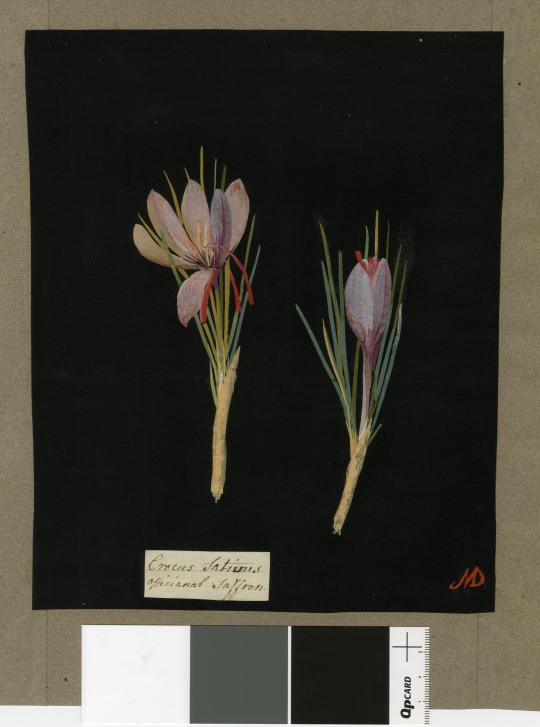
Crocus Sativus Officinal by Mary Delany (1700-1788).
Collage of coloured papers, with bodycolour and watercolour, on black ink background (1776).
© The Trustees of the British Museum.
Creative Commons Attribution-NonCommercial-ShareAlike 4.0 International (CC BY-NC-SA 4.0) license.
88 notes
·
View notes
Text


I had to get a saffron sitter to mind my crop during my trip to the Midwest, but Saturday the 7th they reported 14 blossoms, and on Saturday the 14th I got another big batch of flowers. It’s been dribs and drabs in between those big waves.
2 notes
·
View notes
Text
- OC QUESTIONNAIRE
Thank you so much @latte-trait for the tag!! Since I already made one for Alika let's go with my favorite eldritch witch.

NAME: Mh- Ebenezer Schuster
NICKNAME: None that I'm aware of, unless Ebe counts as one.
GENDER: Let's just say it's complicated, shall we?
STAR SIGN: I'm a Virgo, which suits me quite well. But I think the Tiger from the chinese zodiac is a fair match too. Uh? I look young for my age? Don't think too hard about it, sweeting.
HEIGHT: 5'7 (175cm)
ORIENTATION: Such a specific question! Let's just say I care about "who" I have in front of me rather than "what". Humans are such interesting beings how could I ever restrict my interest to the body alone?
NATIONALITY/ETHNICITY: Made and raised in South California
FAVORITE FRUIT: Persimmon. They are wonderful to eat as they are or in any kind of seasonal recipe. Once I made a spiced honey persimmon toasts out of curiosity and it surely exceeded my expectations. Mh? You want the recipe? Very well.
FAVORITE SEASON: I never tought about it... Let's go with autumn.
FAVORITE FLOWER: Crocus. More precisely the Crocus sativus, which is an autumn blooming variety. Such a splendid specimen. You know, in the Victorian era it was a favorite in Victorian flower language. It was also believed to bring love and was often sent to a lover. It's also a splendid ingredient in alchemy and in the kitchen.
FAVORITE SCENT: Poppies, they reminds me of someone very dear to me.
COFFEE, TEA, or HOT CHOCOLATE: Coffee, french pressed.
AVERAGE HOURS OF SLEEP: I try to sleep 5,6 hours but it's not a task I'm very good at! Life is way too interesting to sleep that long.
DOGS or CATS: Definitely dogs. Nothing can compare with their blind obedience of the canine species. I think they are the perfect addicition for a family, don't you think?
DREAM TRIP: Oh dear me, I don't think it's a place I'll be able to see ever again.
NUMBER OF BLANKETS: How many I own? Oh- No no, darling. I use just one good old-fashioned quilt. Or at least I used to, my partner drastically upgraded the blankets numbers since they moved in.
RANDOM FACT: Practical magic is way more interesting than just making flowers grow and repair objects. When used wisely, it can affect the person itself. Healing magic is a branch of it, but alchemy is too. Practical magic is often overlooked, especially when seen side-by-side with the razzle-dazzling Mischief and Untamed magic… But I guess it's my predecessor's fault. [chuckles]
this time I'm tagging @adelarsims @madfeary @alinelie @lilypixels @occultradio !! (and whoever wants to do it please i NEED to read abt your ocs)
11 notes
·
View notes
Text
The players in my Cyberpunk: Red game don't know it, but yesterday, they met one of the greatest hustlers in the city.
So, some edgerunners were auctioning off some data recovered from an old facility. It used to belong to the corporation my players work for, and they were going to buy it back to keep anyone else from taking the designs, starting up manufacturing, and selling their company's products.
The data being sold were blueprints for a couple kinds of agricultural drones, and a genomic database that ranged from company GMOs to unmodified wild and domesticated plants and animals. The auction ended up being between the PCs, another corporation, and a freelancer representing locals who wanted the bots to help with urban farming efforts. The freelance guy told the PCs that, if they let him have a non-commercial license for the bots, he'd tell them what the other corpo was after and how to stop him from bidding half a million. They agreed, and he pointed out to them that the genomic database included crocus sativus, the plant that saffron came from before it went extinct. The other corpo is from a food company. All he wants is the one plant.
So, the PCs cut a deal where they let him buy the one item out of the database. They didn't have to try to outbid him to keep the GMOs in company hands, and he didn't have to buy the whole goddamn thing, once he knew they knew and the whole plan to be sneaky about it went out the window.
Nice deal, right?
They don't know this, but the only reason the other corpo was even at the auction is because the freelance guy told him where he could get his hands on the genetic code for saffron in exchange for 5,000 kilos of kibble, and another 5,000 if he could keep the original owner from bidding too hard on it.
So now, in exchange for exactly $0, his clients have a year's supply of preserved food and a manufacturing license for autonomous pest control bots.
Ladies and gentlemen, meet Gary Klemp, greatest freelance executive in Night City.
27 notes
·
View notes
Note
Gardenia is a genus of flowering plants in the coffee family, Rubiaceae, native to the tropical and subtropical regions of Africa, Asia, Madagascar, Pacific Islands,[1] and Australia.Kingdom:
Plantae
Clade:
Tracheophytes
Clade:
Angiosperms
Clade:
Eudicots
Clade:
Asterids
Order:
Gentianales
Family:
Rubiaceae
Subfamily:
Ixoroideae
Tribe:
Gardenieae
Genus:
GardeniaGardenia resinifera Roth
Gardenia resiniflua Hiern
Gardenia resinosa F.Muell.
Gardenia rupicola Puttock
Gardenia rutenbergiana (Baill. ex Vatke) J.-F.Leroy
Gardenia sambiranensis Rakoton. & A.P.Davis
Gardenia saxatilis E.T.Geddes
Gardenia scabrella Puttock
Gardenia schlechteri Bonati & Petitm.
Gardenia schwarzii Puttock
Gardenia sericea Puttock
Gardenia similis (Craib) Craib
Gardenia siphonocalyx Valeton
Gardenia sokotensis Hutch.
Gardenia sootepensis Hutch.
Gardenia stenophylla Merr.
Gardenia storckii Oliv.
Gardenia subacaulis Stapf & Hutch.
Gardenia subcarinata (Corner) Y.W.Low
Gardenia taitensis DC.
Gardenia tannaensis Guillaumin
Gardenia ternifolia Schumach. & Thonn.
Gardenia tessellaris Puttock
Gardenia thailandica Tirveng.
Gardenia thunbergia Thunb.
Gardenia tinneae Kotschy & Heuglin
Gardenia transvenulosa Verdc.
Gardenia trochainii Sillans
Gardenia tropidocarpa Wernham
Gardenia truncata Craib
Gardenia tubifera Wall. ex Roxb.
Gardenia urvillei Montrouz.
Gardenia vernicosa Merr. & L.M.Perry
Gardenia vilhelmii Domin
Gardenia vitiensis Seem.
Gardenia vogelii Hook.f.
Gardenia volkensii K.Schum.
Gardenia vulcanica K.M.WongGardenia species typically grow as shrubs or small trees, however some species, such as those native to New Guinea, may grow to 20-30m tall.[1][5][6][7][8] A small number of species found in tropical East Africa and southern Africa grow as small pyrophytic subshrubs.[5][8] At least one species, Gardenia epiphytica, native to Gabon and Cameroon, grows as an epiphyte.[9][10][11] Most species are unarmed and spineless, but some species such as some of those found in Africa are spinescent.[1][5][6][7][8]
The leaf arrangement is typically opposite or verticillate may (arranged in whorls). Leaves vary by species; many species are glossy with a distinctly coriaceous (or leathery) texture such as that seen in Gardenia jasminoides, whilst in others, leaves may be thin and chartaceous (or paper-like).[1][5][6][7][8]
The flowers, particularly in the species most commonly grown in gardens, may be large and showy and white, cream or pale yellow in color, with a pleasant and strong, sometimes overpowering scent that may be more noticeable at night, something quite typical of moth-pollinated plants.[8][12]
Gardenia flowers are hermaphrodite (or bisexual) with each individual flower having both as both male and female structures (that is, having both stamens and carpels) with the flower.[1] The arrangement of the flowers on the plant are solitary or in small terminal clusters or fascicles. The flowers vary across species, but most commonly have a funnel- or cylindrical-shaped corolla tube, normally elongated and narrow distally, surrounded by 5-12 or more lobes (petals) contorted or arranged in an overlapping pattern.[1][5][6][7][8]Crocetin is a chemical compound usually obtained from Crocus sativus, which can also be obtained from the fruit of Gardenia jasminoides.[13] Gordonin is a novel methoxylated flavonol secreted in golden-colored resinous droplets of Gardenia gordonii,[citation needed] which is one of several critically endangered species of the Fiji Islands.
Many of the native gardenias of the Pacific Islands and elsewhere in the paleotropics contribute towards the production of a diverse array of natural products. Methoxylated and oxygenated flavonols, flavones, and triterpenes accumulate on the vegetative and floral buds as yellow to brown droplets of secreted resins. Many focused phytochemical studies of these bud exudates have been published, including a population-level study of two rare, sympatric species of Fiji, G. candida and G. grievei.[14] The evolutionary significance of the gums and resins of gardenias in attracting or repelling invertebrate herbivores, has yet to be explored by ecologists.[citation needed]
I love reading wikipedia and jasmin gardenia (pt br name) is my favorite flower
Thanks for the info vroski! Flowers are nice
3 notes
·
View notes